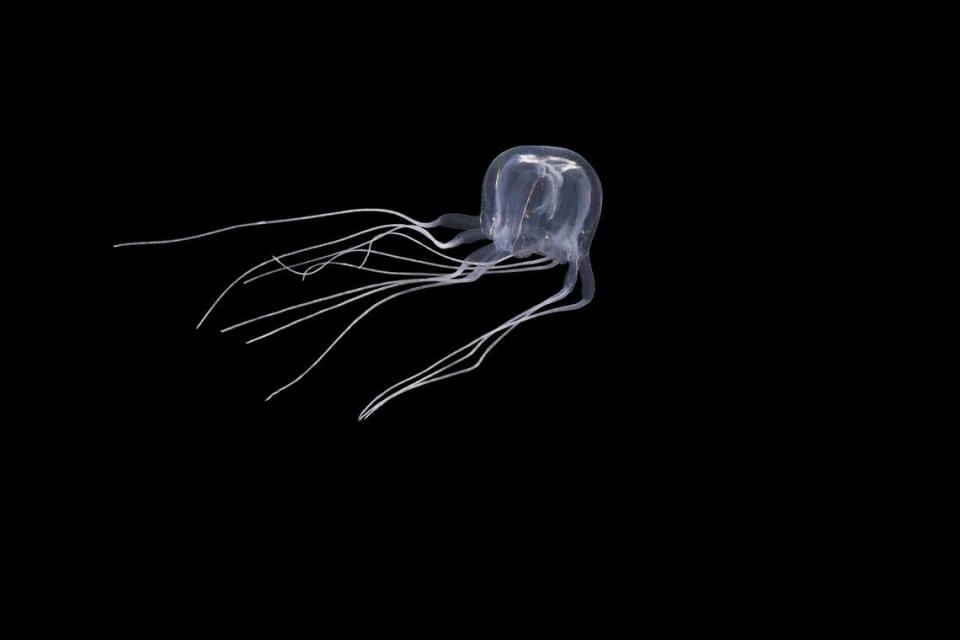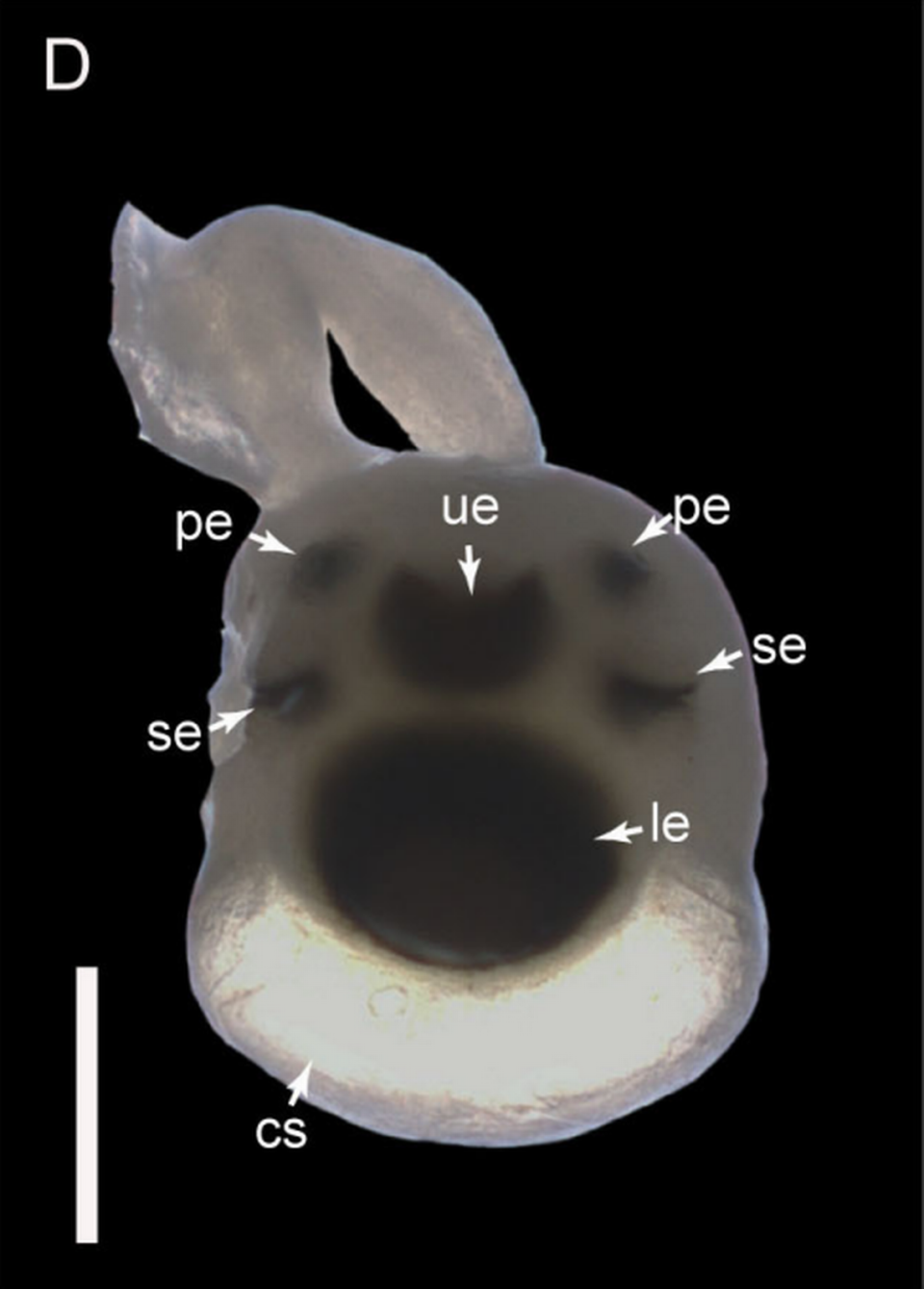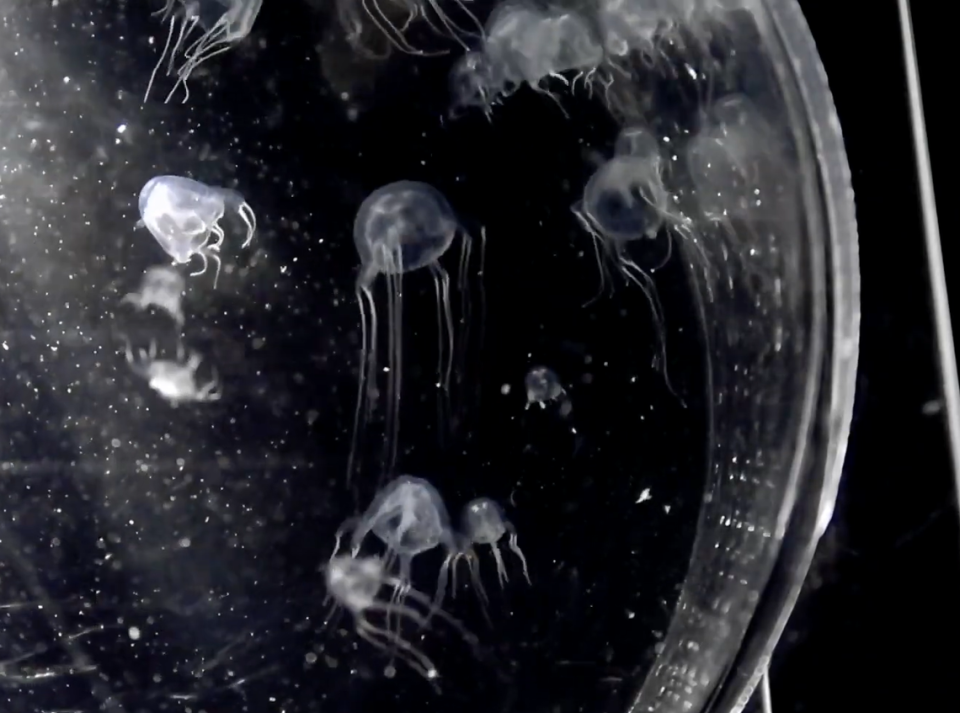Cube-shaped creature with 24 eyes discovered hiding in pond in Hong Kong, study says
Scientists let down a net and scooped up water from a brownish-green pond in Hong Kong. As they looked closer at their catch, they found a cube-shaped 24-eyed creature looking back — and discovered a new species.
The researchers found the creature hiding in the “brackish water” of shrimp ponds at Mai Po Nature Reserve, according to a study published March 20 in the journal Zoological Studies. They returned three summers in a row and kept finding more of these creatures.
The scientists analyzed the animals and discovered a new species of box jellyfish, the study said.
Box jellyfish are named for their “cube-shaped” bodies, researchers said. This group of jellyfish contains “some of the most venomous marine animals in the world.”
The new species, Tripedalia maipoensis, has a see-through body with a slight whitish tinge, photos show. The jellyfish, measuring less than an inch long, has three tentacles extending from each corner of its body, the study said.

The jellyfish has 24 eyes arranged in sets of six, researchers said. On each side, the creature has two larger eyes — the upper and lower lens eyes — surrounded by four smaller eyes known as the pit and slit eyes.
Two of these eyes are used for seeing images while the other four are used to detect light, according to an April 18 news release from Hong Kong Baptist University.

The Tripedalia maipoensis jellyfish has “pedal-shaped structures” at the base of its tentacles that act like “boat paddles,” the release said. These “paddles” allow box jellyfish to swim faster than other types of jellyfish.
When swimming, the box jellyfish looks as if it’s pulsating as it thrusts its body forward, video from Hong Kong Baptist University shows.

Researchers identified the Tripedalia maipoensis jellyfish as a new species because it was genetically and physically distinct from other box jellyfish. They named the animal after the Mai Po area where it was discovered.
Qiu Jianwen, the research team leader, described the Mai Po area as “relatively well-studied” and noted this discovery “highlights the rich diversity of marine life in Hong Kong and even the whole of China,” according to the release.
Tripedalia maipoensis is the first box jellyfish species to be discovered in Chinese waters, the release said.
The Mai Po Nature Reserve is in northern Hong Kong. Hong Kong is a special administrative region of China and located on the southern edge of the country.
Scientists raise baby spiders in a lab — and discover several new species in China
Ancient ‘blob’ fossils aren’t jellyfish after all. ‘Been looking at them upside down’
Scientists haul in fishing net — and discover new species off the coast of Ireland

